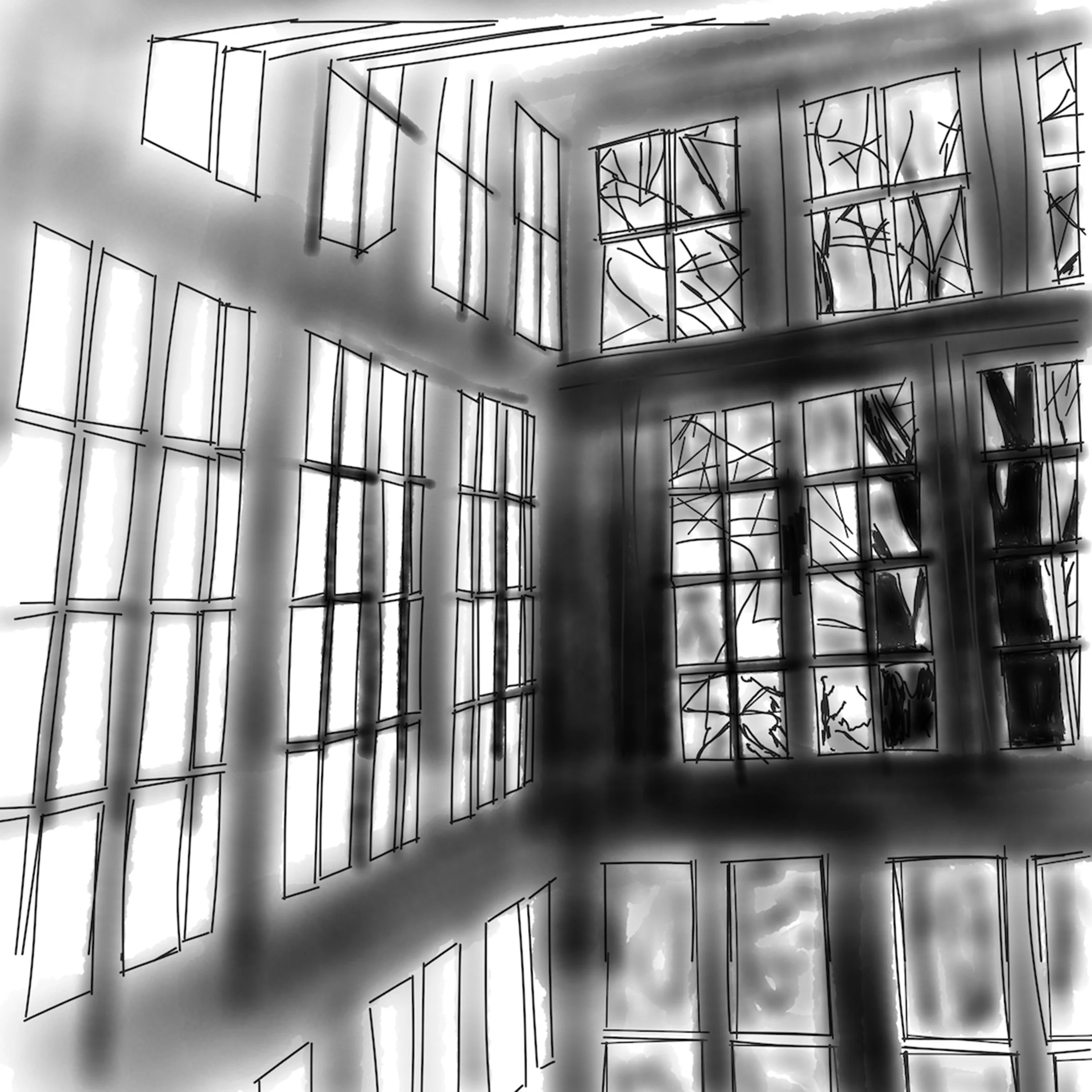Becoming Visible
Light study, the Dollhouse.
I was pulling together before-and-during construction photos of the Dollhouse — my studio, my favorite place, my ever-evolving project — when I felt it: a wave of irritation.
Why has this project never been published?
Why has nothing I’ve done under my own name ever been published?
I’ve been bashful about my own successes. Then resentful that I’m not seen. It’s a strange cycle — hiding, then hating the invisibility I created. Or talking with confidence about my work and cringing in embarrassment later. Was I too much? Do I annoy everyone the way I annoy myself? I’m more comfortable in my cave.
It brought me back to a memory that has haunted me since I began seeing it differently this year. It was around 2017, when I was working with Freeman, a $2-billion-dollar, family-run company where I’d been brought in by Bruce Mau — my hero from grad school. (His Incomplete Manifesto for Growth was pinned above my drafting table at Yale; his optimism and creative audacity were a north star for so many of us.)
Working with Bruce and Freeman felt electric. The CEO, Bob Priest-Heck, was visionary; Carrie Freeman, extraordinary. My sister Melinda even worked for the company — we were both there, orbiting the same constellation for a moment in time.
That year, Freeman celebrated its 90th anniversary. Bruce introduced his new “Design Council,” the group charged with shaping the company’s creative future. I wasn’t on it. Every member on stage was male.
My phone lit up with texts from women across the audience: Why aren’t you on it?
I asked myself the same question.
Later that evening, sitting between Bruce and Bob at dinner, I half-joked that I should be on the Council. I laughed as I said it — too self-effacing, too careful — the way people sometimes laugh to make ambition sound more palatable. I can still feel that moment, the unease of it. The air between what I said and what they heard.
I had the résumé. The experience. The expertise. But I wasn’t seen as a peer. And I wonder now if I even saw myself as one.
I used to think the story ended there — with disappointment.
Now I think it’s about self-representation.
How could I have told my own story differently?
What energy was I projecting — apologetic confidence, as if I were lucky to be there instead of deserving to be there?
Luck played a part in my career, yes. But so did tenacity. So did the work.
I’m learning that if I want to be seen, I have to walk myself out of the shadows. I have to say: This is mine. I built this. I belong here.
I have to remind myself that it’s good that my work for myself has a raw edge and feels eclectic — that it doesn’t fit neatly into a time period or trend. It’s mine, and that’s a proper reflection of me. (If I designed your house for you, it would exude you too. Finding the essence of a project is my compass.)
This week, as I flipped through the Dollhouse construction photos from 2016 — the demolition dust, the framing, the paint, the light, the vision — I thought about how much of my life’s work exists quietly, unshown. How much I have grown in the last ten years since I originally designed the renovation of the caretaker cottage and carriage house, and since starting my own practice in 2017.
I recently saw that one of the brilliant women from my Rockwell studio had her upstate home published in Dwell. I was genuinely happy for her; she is talented and deserving. And honestly, I was a little furious with myself.
But maybe that fury is fuel.
Because I’m done waiting to be discovered.
I’ve been here the whole time — building, designing, thinking, creating.
And now, I’m learning to appreciate it and to show it.
Maybe this is the next phase of my own design practice: not just shaping spaces, but shaping visibility.
To treat self-advocacy as a design problem — and solve it with the same rigor, empathy, and imagination I give every client.
It’s time to step into the light.

